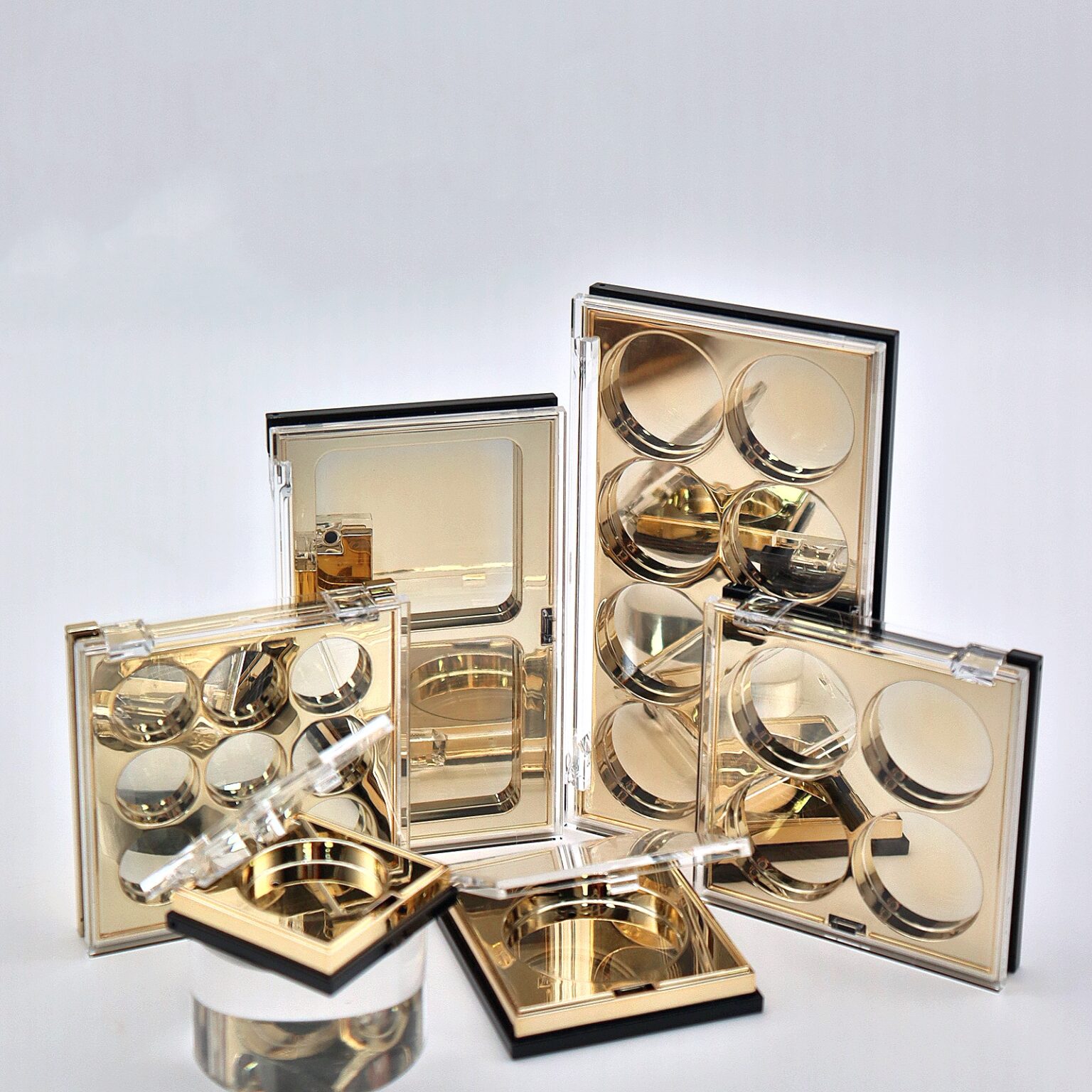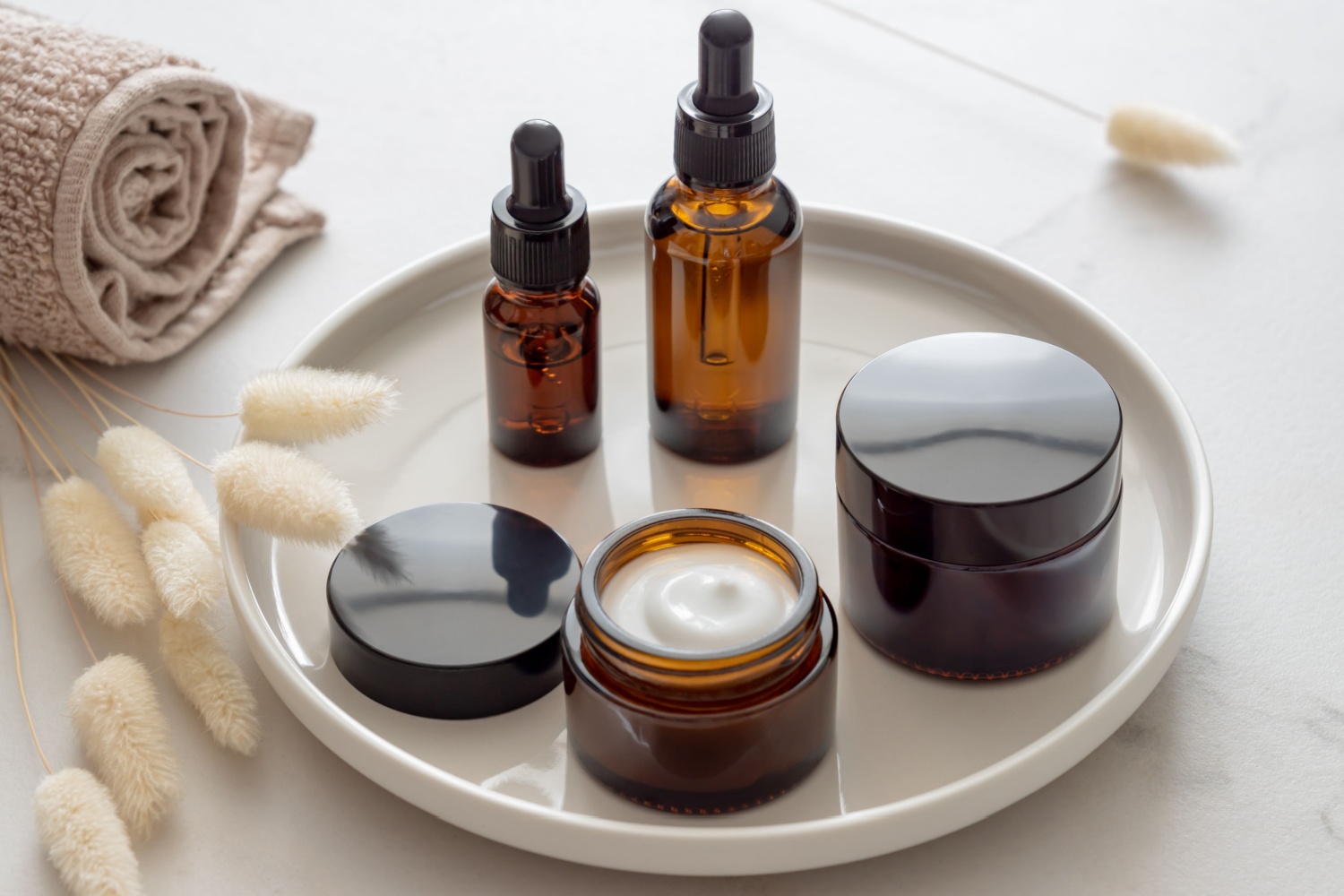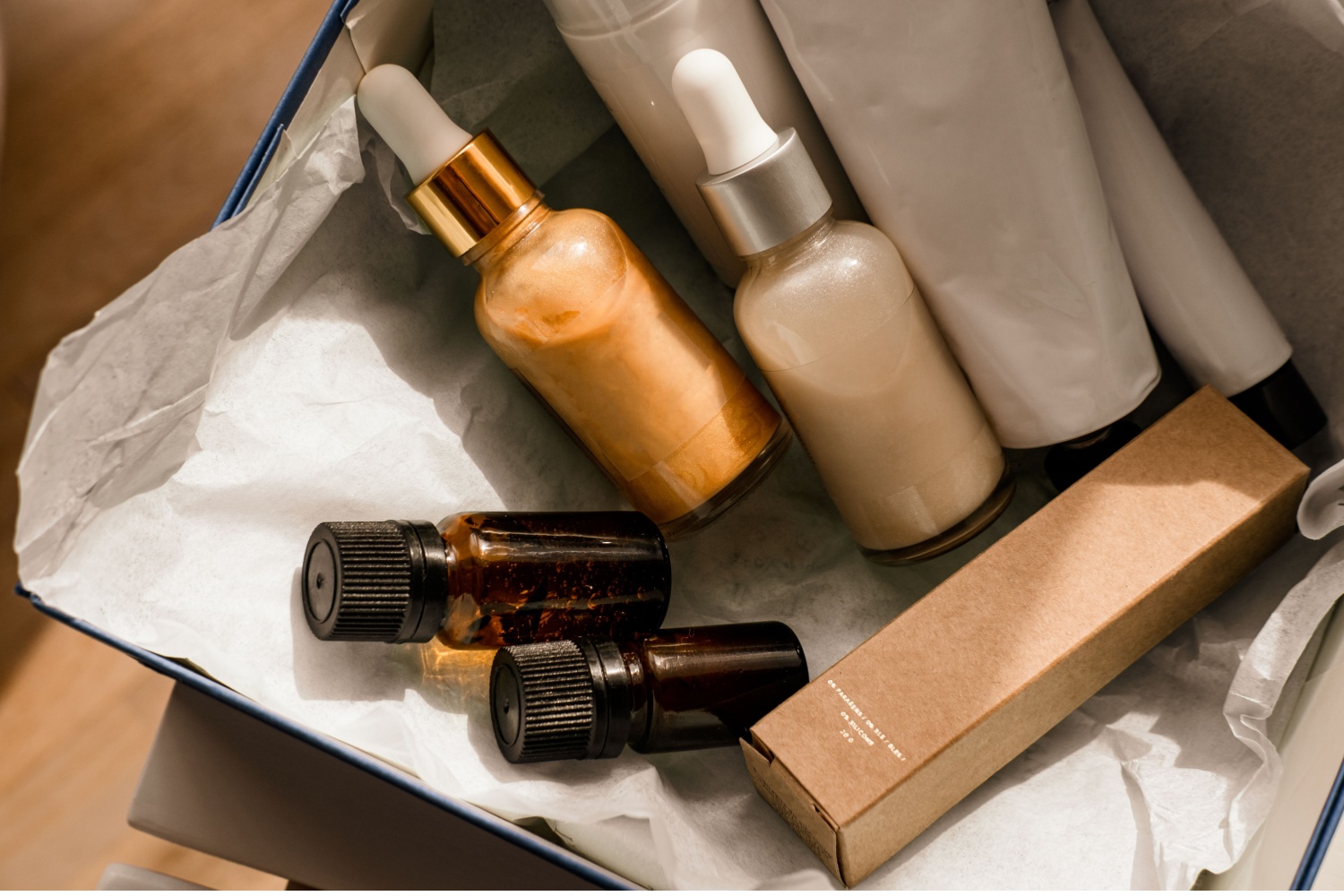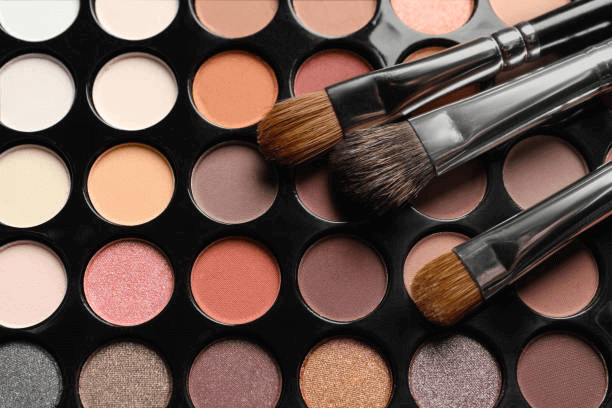
Introduction to Cosmetics Packaging Design
Cosmetics packaging design, often referred to as beauty packaging design or makeup packaging design, is more than just a container for products. It’s a powerful tool that communicates the essence of a brand, influences purchasing decisions, and enhances the customer experience. With the beauty industry evolving rapidly, the importance of innovative cosmetic packaging design cannot be overstated.
The Evolution of Packaging in the Beauty Industry
From the ornate containers of ancient civilizations to the sleek minimalist skincare packaging designs of today, the journey of cosmetics packaging has been transformative. Earlier, packaging for beauty products was simple and functional. But as the beauty industry expanded, so did the need for more creative cosmetic packaging ideas. Brands began to realize that packaging cosmetics was not just about protection but also about presentation. The cosmetic box design became an art, with each box telling a story of luxury, elegance, or innovation.
Why Innovative Design Matters in Cosmetics?
In the crowded aisles of beauty stores, what makes a product stand out? It’s often the cosmetic packaging design. A unique makeup packaging or a creative skincare packaging design can be the difference between a product being picked up or left behind.
Innovative design in cosmetics packaging ideas not only attracts attention but also reinforces brand identity. For instance, a luxury cosmetic packaging design communicates premium quality, while eco-friendly materials signal a brand’s commitment to sustainability. In essence, the design of cosmetic products packaging is a silent salesperson, influencing decisions even before a customer tries the product.
| Emotional appeal | Good design can create experiences that are emotionally attractive to the consumer, making the product more appealing and easier to use |
| Brand identity | Design can help assign meanings, create associations, and support intentions, which are all important for building a strong brand identity |
| Beauty | According to design guru Debbie Millman, beauty is the most important element to consider when designing something, and the rest will follow by default. This is especially true for the beauty industry, where the visual appeal of the product is crucial to its success |
| First impressions | Good design can make a strong first impression on consumers, which is important in the highly competitive cosmetics industry.Visual complexity and prototypicality are two design factors that work together to create a good impression. A well-designed label or packaging can make a product stand out on the shelf and catch the consumer’s eye. |
The Role of Sustainability in Modern Packaging
Sustainability has become a buzzword in the beauty industry, and for a good reason. With growing awareness about the environmental impact of packaging waste, brands are under pressure to adopt sustainable practices in their cosmetic packaging design. This shift towards eco-friendly packaging for cosmetics products is not just a trend but a necessity.
| APG | APG offers eco-friendly cosmetic packaging made of up to 100% PCR, bamboo, and sustainable paper. |
| Bamboo packaging | Bamboo is an excellent biodegradable replacement for plastic and paper, and its wood is ideal for external jars using acrylic or glass. |
| Paper packaging | Paper packaging is one of the most common alternatives to plastic packaging as they are both biodegradable and renewable materials. |
Biodegradable Materials and Their Impact
Biodegradable materials are making waves in the world of cosmetics packaging design. These materials break down naturally, reducing the burden on landfills and the environment. Brands are exploring alternative materials like bamboo, paper, and even mushroom spores for their cosmetic box packaging design. For instance, some luxury cosmetic packaging designs now feature bamboo caps and cardboard boxes, replacing plastic. These sustainable choices in cosmetic products packaging not only appeal to eco-conscious consumers but also set a brand apart in a competitive market.
Exploring Alternative Materials like Bamboo and Glass
In the quest for sustainability, brands are turning to alternative materials for their cosmetic packaging design.
Bamboo, with its rapid growth rate and biodegradability, has become a popular choice for brands aiming for an eco-friendly image.
Glass, while heavier, offers a luxurious feel and is 100% recyclable, making it a favorite for premium beauty product packaging design.
These materials not only reduce the carbon footprint but also offer a distinct aesthetic, setting products apart on the shelves.
The Shift Towards Lightweight and Durable Plastics
While plastics have received criticism for their environmental impact, innovations in this domain are noteworthy. Brands are exploring lightweight plastics that reduce transportation emissions and are incorporating post-consumer recycled content into their cosmetic products packaging. The challenge is to balance durability with sustainability, ensuring that the packaging protects the product without harming the planet. As technology advances, we can expect even more eco-friendly plastic solutions in cosmetics packaging design.
The Rise of Refillable Packaging Solutions
Refillable packaging solutions are another innovative approach in the world of cosmetic packaging design. Brands are offering refill options for products like lip gloss, foundation, and even skincare packaging design. Customers can keep the original container and simply purchase a refill when the product runs out. This approach reduces waste and offers a cost-effective solution for both brands and consumers. Refillable packaging for beauty products is a win-win, combining sustainability with customer convenience.

Consumer Behavior and Packaging Design
Understanding consumer behavior is pivotal in the creation of effective cosmetics packaging design. From the colors and typography used in the cosmetic box design to the shape and tactile experience of the packaging, every element plays a role in attracting and engaging the target market.
The Psychology Behind Color Choices
Color is more than just a visual element in cosmetic packaging design; it’s a powerful psychological tool. For instance, soft pastel hues may evoke a sense of calm and are often found in skincare packaging design, while bold reds can signal passion and are a classic choice for lipstick packaging. Understanding the emotional and psychological impact of colors is essential for designers aiming to create packaging that resonates with their target audience. It’s not just about making the packaging for cosmetics visually appealing; it’s about creating an emotional connection with the consumer.
- Color influences perceptions: Color influences perceptions that are not obvious, such as the taste of food. It can also affect our mood, behavior, and success.
- Color preference is relatively uniform: Although color associations can vary contextually between cultures, color preference is thought to be relatively uniform across gender and race.
- Color can trigger emotional responses: Each color can trigger a range of emotional responses, such as blue and stability, red and passion, yellow and optimism.
- Color is subjective: Color perception is subjective, and certain colors have a very universal significance. The physiological and emotional effect of color in each person is influenced by several factors such as past experiences, culture, religion, natural environment, gender, race, and nationality.
- Color is important in marketing: Color can impact how buyers perceive different brands and products, so it’s crucial to pick the tones that align with your business’s goals and target audience. Color evokes feeling and incites emotion, making it an essential tool in marketing.
How Packaging Shape Influences Purchasing Decisions?
The shape of the packaging for beauty products is another critical factor in consumer behavior. Ergonomic designs that are easy to hold, open, and use can significantly enhance the customer experience. Unique shapes can also catch the eye and make a product stand out on the shelf. For example, a perfume bottle with a unique, artistic shape becomes more than just a container; it becomes a piece of decor, a statement. In this way, the shape of the cosmetic products packaging becomes a focal point that can entice customers and encourage them to make a purchase.
- Perception of product attributes: The shape of packaging can communicate certain product attributes to consumers. For example, rounded and curvy shapes can create a sense of softness and approachability, while angular shapes can create a sense of boldness and strength. The overall design of packaging can also convey a brand’s personality and values.
- Emotional appeal: Packaging shape can evoke emotions and create a connection with consumers. Unique and interesting shapes can capture attention and generate excitement. Packaging that conveys a sense of urgency or limited availability can create a compulsion to make a purchasing decision.
- Differentiation: Uniquely shaped packaging can help a product stand out on the shelf and differentiate it from competitors. It can attract attention and pique curiosity, increasing the likelihood of a purchase.
- Brand perception: Packaging shape plays a role in shaping the perception of a product and its brand. The design aspects of packaging, including shape, can convey the brand’s image, values, and quality. It can also influence the perceived reliability and trustworthiness of the product.
- Target audience: The shape of packaging should consider the preferences and expectations of the target audience. Different shapes may appeal to different demographics, such as children or adults. Understanding the expectations of the target audience is crucial in determining the appropriate packaging shape.
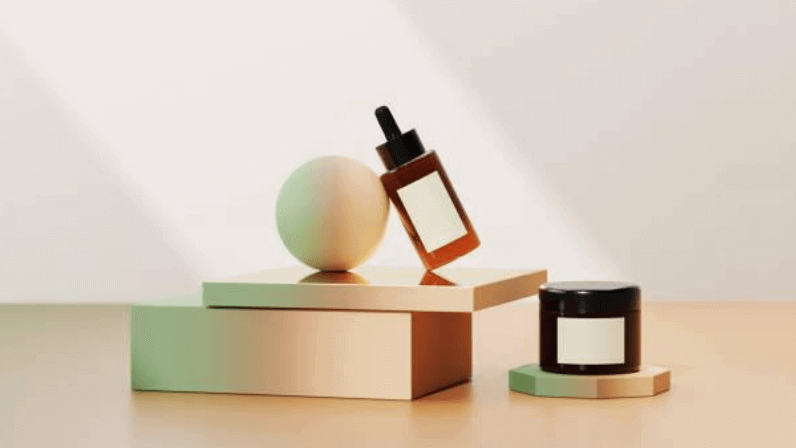
Technological Advancements in Packaging Design
In the digital age, the intersection of technology and cosmetics packaging design is inevitable. Brands are leveraging technology to enhance the user experience, making the unboxing process as memorable as the product itself.
Smart Packaging and IoT Integration
Smart packaging is revolutionizing the cosmetics packaging design landscape.
- By integrating Internet of Things (IoT) devices into packaging for beauty products, brands can offer a more interactive experience.
- For instance, a QR code on a makeup packaging design can lead users to tutorials on how to use the product.
- NFC (Near Field Communication) chips embedded in cosmetic products packaging can provide information about the product’s origin, ingredients, and even personalized recommendations.
This fusion of technology and packaging design cosmetics not only enhances the user experience but also fosters brand loyalty.
Augmented Reality (AR) and Virtual Try-On Features
Augmented Reality (AR) is making waves in the beauty industry, especially in makeup packaging design. Brands are using AR to allow consumers to virtually “try on” products before purchasing. By scanning the packaging with a smartphone, users can see how a particular shade of lipstick or eyeshadow looks on them.
This virtual try-on feature, integrated into the cosmetic packaging design, bridges the gap between online shopping and the in-store experience, offering consumers a unique and personalized shopping journey.
Why Storytelling Through Packaging?
In today’s competitive market, cosmetic packaging design must do more than just look appealing. It must tell a story. Brand storytelling through packaging for cosmetics products is a powerful way to connect with consumers and convey the brand’s values, ethos, and uniqueness.
Conveying Brand Values and Ethos
Whether it’s a commitment to sustainability, luxury, or innovation, the values a brand stands for must be reflected in its cosmetic packaging design. For example, a brand focused on natural ingredients might opt for earthy tones and textures in its skincare packaging design. Luxury brands might choose elegant fonts and metallic accents to convey a sense of opulence. Every element of the cosmetic box design, from color to material, becomes a part of the brand’s narrative, speaking to the consumer on a deeper level.
Packaging as a Medium for Brand Narratives
Packaging is not just a container; it’s a canvas for storytelling. Creative cosmetic packaging design can illustrate a brand’s journey, its mission, or even the inspiration behind a particular product line. Limited edition packaging for beauty products can celebrate milestones or collaborations. Interactive elements, such as QR codes leading to behind-the-scenes videos, can provide a more immersive experience. In essence, the packaging becomes an extension of the brand itself, a tangible representation of what the brand stands for.
Design Techniques for Enhanced User Experience
In the realm of cosmetics packaging design, user experience (UX) is paramount. It’s not just about aesthetics; it’s about how the consumer interacts with the packaging, from the moment they see it to the moment they use the product.
Ergonomic Designs for Ease of Use
Ergonomics plays a crucial role in cosmetic packaging design. Packaging that feels good in the hand, is easy to open, and dispenses the product efficiently can significantly enhance the user experience. For instance, a lipstick packaging that smoothly twists up, a foundation bottle with a precise pump, or a skincare packaging design that allows for controlled dispensing are all examples of ergonomic design in action. These subtle design elements can make a world of difference in the daily routines of consumers.
Incorporating Tactile Elements for a Premium Feel
Tactile elements in cosmetics packaging design can elevate a product from ordinary to extraordinary. Textured surfaces, embossed logos, or soft-touch finishes can provide a luxurious feel, making the product more desirable. These tactile cues, often found in luxury cosmetic packaging design, engage the sense of touch, creating a multisensory experience that can enhance brand perception and loyalty.
Regulatory and Compliance Challenges
Navigating the complex landscape of regulations is a critical aspect of cosmetics packaging design. Ensuring that packaging for beauty products meets global standards while also being innovative can be a challenging balancing act.
Here are some of the global packaging standards:
| BRCGS Packaging Materials Global Standard | This standard sets out the requirements for the manufacture of packaging and packaging materials used in food packaging and filling operations, cosmetics, toiletries, and other consumer products and materials. It provides a framework for all types of packaging manufacturers to assist them in the production of safe packaging materials, manage product quality to meet customers’ requirements, and fulfill their obligations regarding legal compliance. |
| Global Food Safety Initiative (GFSI) | GFSI is a collaboration between some of the world’s leading food safety experts from retailers, manufacturers, and food service companies. It benchmarks food safety standards to ensure they are robust and meet industry needs. |
| Sustainability regulations | Sustainability regulations for packaging have become increasingly ambitious, with consumers becoming more concerned about the environment and the impact of packaging leakage. New, stricter sustainability regulations are emerging on multiple fronts with increasing frequency. However, regulatory focus and approaches vary considerably by region and diverge even further when viewed at the country or state level. |
Navigating Global Packaging Standards
Different regions have varying regulations when it comes to cosmetic packaging design. From labeling requirements to safety standards, brands must be well-versed in these regulations to ensure compliance. For instance, certain materials approved for use in one country might be restricted in another. This complexity requires brands to be adaptable, often leading to region-specific packaging designs. Staying updated on these regulations is crucial to avoid potential legal pitfalls and ensure the product’s smooth entry into global markets.
Ensuring Safety and Quality in Design
Safety and quality are paramount in cosmetics packaging design. Packaging must protect the product from contamination, ensure its longevity, and prevent any leakage or damage. This requires rigorous testing, from drop tests to seal integrity checks. Furthermore, the materials used must not react with the product, ensuring that the consumer receives the product in its intended form.
Brands often collaborate with packaging experts and conduct extensive research to ensure that their cosmetic products packaging is not only beautiful but also safe and functional.
Case Studies: Successful Packaging Designs
Analyzing successful cosmetics packaging designs can provide valuable insights into what works and why. These case studies highlight brands that have nailed their packaging, creating a strong visual identity and resonating with their target audience.
Fenty Beauty: Fenty Beauty’s packaging design is sleek, modern, and luxurious. The brand’s use of geometric shapes and metallic finishes creates a sense of sophistication and high-end quality.
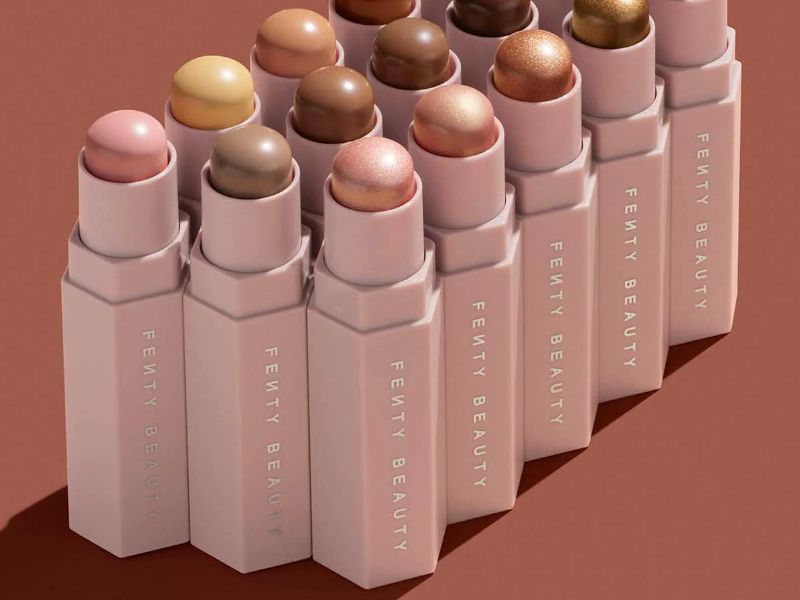
Kylie Cosmetics: Kylie Cosmetics’ packaging design is bold and eye-catching, with bright colors and unique shapes. The brand’s use of metallic finishes and holographic accents adds a touch of glamour and luxury.
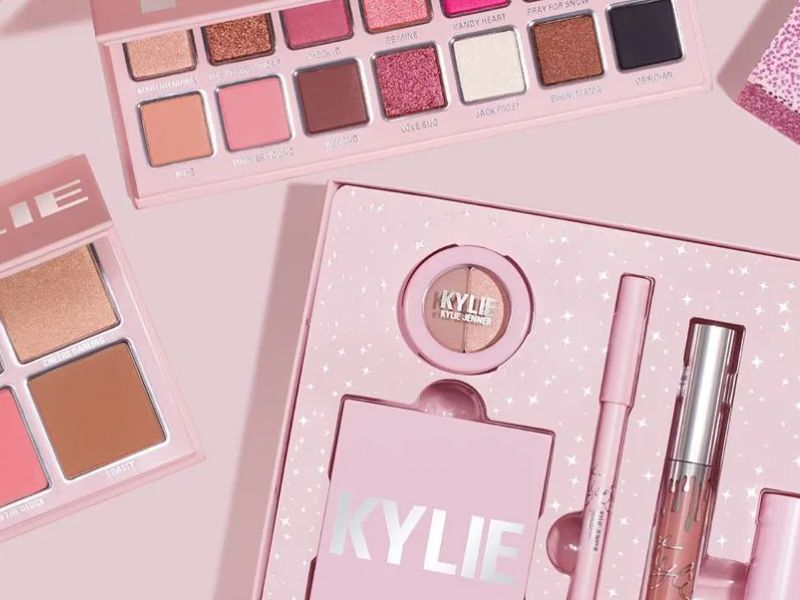
Lush: Lush’s packaging design is eco-friendly and sustainable, reflecting the brand’s commitment to ethical and environmentally conscious practices. The brand’s use of recycled materials and minimalistic design creates a sense of simplicity and purity.
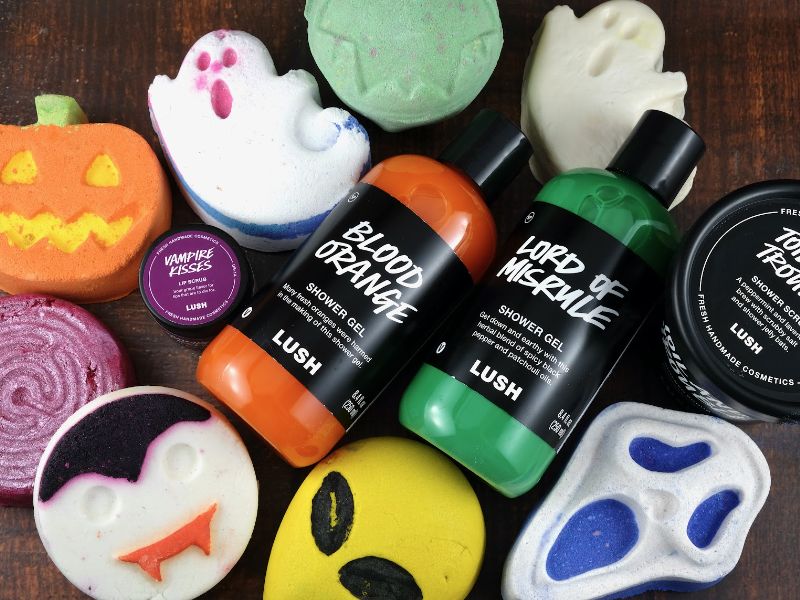
Designing for Diverse Product Lines
The beauty industry is increasingly recognizing the importance of inclusivity. As a result, cosmetics packaging design must cater to a diverse range of consumers, reflecting different skin tones, types, and preferences.
Adapting Packaging for Different Skin Tones and Types
Inclusivity in the beauty industry means offering a wide range of shades and formulations. The packaging design cosmetics must reflect this diversity. For instance, a foundation range catering to various skin tones might use a gradient effect on its packaging, showcasing the spectrum of shades available. Similarly, skincare packaging design for products targeting different skin types, from oily to dry, might use color-coding or distinct icons to help consumers identify the right product for their needs.
Packaging Solutions for Gender-Neutral Products
The beauty industry is also moving away from rigid gender norms. Brands are launching gender-neutral products, and the cosmetic packaging design for these products often emphasizes neutrality and universality. Minimalist designs, neutral colors, and straightforward typography are common features of such packaging. By moving away from traditionally gendered design cues, brands can appeal to a broader audience and reflect a more modern, inclusive approach to beauty.
The Role of Collaboration in Packaging Design
In the dynamic world of beauty, collaboration can be a game-changer. By partnering with artists, designers, and even consumers, brands can infuse fresh perspectives into their cosmetics packaging design, resulting in unique and memorable products.
Partnering with Artists and Designers
Many brands are turning to external creatives to elevate their cosmetic packaging design. Collaborations with renowned artists or graphic designers can lead to limited-edition packaging for beauty products that become instant collectibles. These collaborations not only offer a fresh aesthetic but also tap into the fan base of the artist or designer, expanding the brand’s reach. From intricate illustrations to avant-garde designs, these partnerships result in packaging that is as much a work of art as it is a functional container.
Co-creating with Consumers for Authentic Designs
In the age of social media, consumers want their voices to be heard. Some forward-thinking brands are engaging their audience in the design process, soliciting feedback on potential designs or even running contests where fans can submit their own cosmetic packaging ideas. This co-creation approach ensures that the final product resonates with the target audience. After all, who better to guide the design of a product than its intended users? This strategy not only results in authentic packaging designs but also fosters a sense of community and brand loyalty.
Conclusion:
The Future Landscape of Cosmetics Packaging Design The world of cosmetics packaging design is dynamic, with technology, sustainability, and consumer preferences shaping its future.
Contact us today if you want to elevate your brand with innovative designs, sustainable solutions, and a commitment to functionality!

